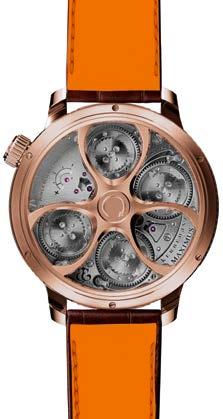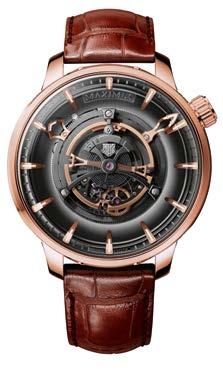
1 minute read
TOURBILLON


Size is everything in the realm of horology. In the watch world of micro-architecture, designers often like to play with superlatives – though not always those that collectors expect. Timepieces are often known to boast “the smallest”, “the most efficient”, “the most discreet”, “the thinnest”, or “the most complex” of features. Each of these efforts makes sense when the goal is to put as much as possible into a package designed to be worn on the wrist. At other times, a watchmaker’s goal is to boast, impress or simply attract attention. In those instances, the engineering efforts at play may be the exact opposite to the above. Case in point is the Swiss Kerbedanz Maximus, with a tourbillon so large it requires specially designed hands that sit underneath it.
At 27mm wide, the diameter of the “giant” flying tourbillon takes centre stage on the Kerbedanz Maximus watch dial. Most tourbillons rotate once per minute, but the Maximus’ tourbillon makes a full rotation once every six minutes. With this slower rotation and a 2.5Hz operational frequency, simply gazing at the persistently animated dial of the Maximus is, for many, a mesmerising experience.
With 415 parts required for assembly, the complicated movement requires an enormous level of consistent torque to power the large tourbillon-based regulation system. Winding the watch is actually performed by turning the case back, which offers a view of the four mainspring barrels along with a power-reserve indicator. Few watch movements indicating only the time with an hour and minute hand are this intensely complicated. Kerbedanz needed to develop a unique system of hands that exist around the tourbillon, as opposed to cutting through it, in order to maintain the aesthetic quality of the dial and further offer the technically sophisticated experience that collectors at this level demand.
How “maximum” is the Maximus on the wrist? The case (available in titanium or 18k gold) is a hefty 49mm wide and appreciably thick thanks to the steeply domed sapphire crystal. The intention behind the doming is to allow visibility of the large tourbillon through the sapphire crystal when viewed from the side, offering yet another visual perspective to this massive tourbillon-based piece of wearable timepiece art.


